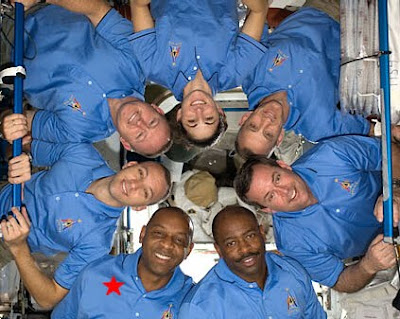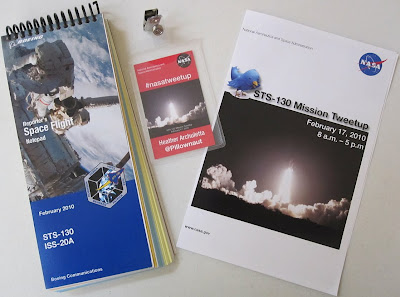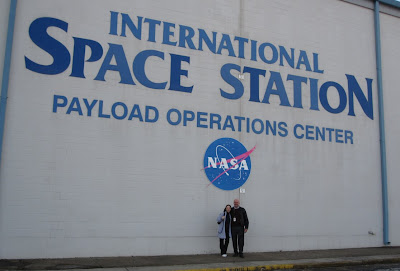Finally got the last of my pictures formatted and uploaded to the Picasa Galleries, featuring the STS-130 Twitterati. And what a diverse crowd! Both my Follow and Follower categories on Twitter have doubled, thanks to this event, and I learned a great deal about how the Twitter options and sub-cultures work. Just what the newbie was hoping for.

The final part of our day was spent in the third and final Mission Control Center at JSC, where once again, John McCullough hosted the tweet crowd, and explained the finer points of MCC operations -- this time for the space station.
Apollo, Shuttle and ISS Mission Controls ... all in one afternoon, and so much activity in each center! Of course, ISS operations, unlike Shuttle missions, are 24 x 7 x 365. No rest for the orbiting!
The ISS room has been used for certain Shuttle operations in the past, and also for Skylab monitoring. Recently, this center was updated with a high-definition screen that provides a continual view into the International Space Station.
As McCullough spoke, astronauts Jeff Williams, TJ Creamer and George Zamka floated about in the background. We had just come from Shuttle MCC where we had heard their wake-up call, so they were all busy with morning tasks... and preparing for a call from President Barack Obama.
Accompanied by local school-children, Obama hooked in. Both the President and the astronauts passed phones and microphones about for a lively Q&A session -- which is now all over the web, but my clips have fun moments you won't see in the media uploaded to NASA.gov or released to the press. Granted, my informal filming isn't as steady, but I got some great crowd reaction... namely our group commenting and laughing when no astronaut wanted to answer one little girl's question!

Pinch me, we got to watch this live from Mission Control!
Upon being handed the phone by the President, young Ruth of North Carolina asked, "What are some of the benefits of exploring space, as opposed to some of the other places on Earth?"
Around the 00:17 mark, you can hear us all crack up at the collective ISS response. Flight engineer and resident ISS guitarist Stephen "Stevie Ray" Robinson stepped up, and spoke about the human body's adaptability, how much we learn about how the body works in micro-gravity.
Having experienced some of these "adaptation" issues first-hand in my studies, I absolutely loved his answer!



































































































